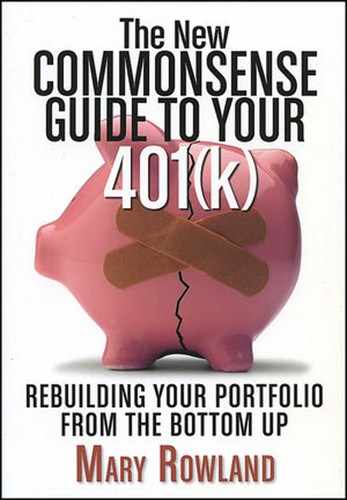REMEMBER THAT THE U.S. GOVERNMENT, via Congress, keeps a tab on how much money escapes current taxes. In the fall of 2008, the House education and labor committees held a hearing about whether 401(k) plans should be retired as a thirty-year experiment that ended in failure when everyone lost money in the stock market crash. One speaker said the government should offer a different kind of retirement plan for Americans, one run by the government.
Prior to the 1986 Tax Reform Act, participants were permitted to put a great deal of money into their 401(k) plans—up to $30,000 a year. But that tax reform law, which limited or eliminated many types of tax shelters, reduced as well the amount that individuals could contribute to their 401(k) plans, to $7,000 in 1987, an amount set to increase with inflation. A 1994 law decreed that the limit would rise only in $500 increments. When inflation is low, the limit may remain the same for two years. A later ruling set different limits for those younger than forty-nine and those older than fifty.
The limit for participants younger than forty-nine is $16,500 for 2009. For participants age fifty and over, the limit is $22,000. For many employees, a more important limitation is the one imposed by the actual derferral percentage (ADP) test. This test, which is typically called a nondiscrimination test, is mandated by the government to determine that the plan is not unfairly favoring its higher-paid workers. To comply with government rules, 401(k) plans must pass the test for each plan year.
The 2006 Pension Protection Act added a "safe harbor" that said a plan that had automatic deferral for lower-paid workers beginning at 3 percent when they began employment, increasing to 4 percent a year later, and then increasing again to 5 percent and 6 percent after the third year and beyond, is not required to test for nondiscrimination.
This law, was intended to bring more lower-paid workers into the plan, and it has. Employers must explain the plan to new employees and give them the option to opt out or to get their money back after the first two paychecks if they want to opt out. This rule became effective for the 2008 plan year after the Department of Labor issued guidance on the appropriate default investment for this money. The Department of Labor declared balanced funds and target-date funds to be appropriate. A balanced fund is one that includes both stocks and bonds, usually weighted a bit toward stocks. Target-date funds offer a choice of retirement dates such as 2020, 2030, and so forth. The portfolio is then managed using a "glide path," or an increasingly conservative mix of asset classes as the target date approaches.
For employers who must administer the nondiscrimination test, here's how it works: Contributions made by employees earning less than $110,000 in 2009—the number is indexed—are tossed into a pool to determine the average percentage of salaries they contribute to the 401(k) account. Then the average salary contribution is calculated for those earning more than $110,000. The Department of Labor mandates that the spread between the two groups be regulated: In most cases, it is limited to 2 percentage points. If the group that is not highly compensated contributes 4 percent of salary on average, the highly compensated group can contribute no more than 6 percent on average.
Suppose a company discovers that its highly compensated executives are contributing an average of 7 percent and its lower-paid group only 4 percent. In the past, the company was forced to return the excess dollars as taxable income to the higher-paid group. The 2006 Pension Protection Act allows employers to conduct the test using the prior year's numbers. An employer would be delighted if a fifty-five-year-old employee in the lower-income group earning $109,000 contributed the full $22,000, or 20 percent of her salary, because that would boost the average for the lower-paid group and allow the higher-paid group to contribute more.
Section 415 of the Internal Revenue Code imposes a limit on total non-taxable savings made by and for an employee. This includes the deferral limits just discussed as well as employee after-tax contributions, the employer match, and any other employer contributions such as profit-sharing. The combination of all these contributions cannot exceed the lesser of 100 percent of income or $49,000 for 2009.
